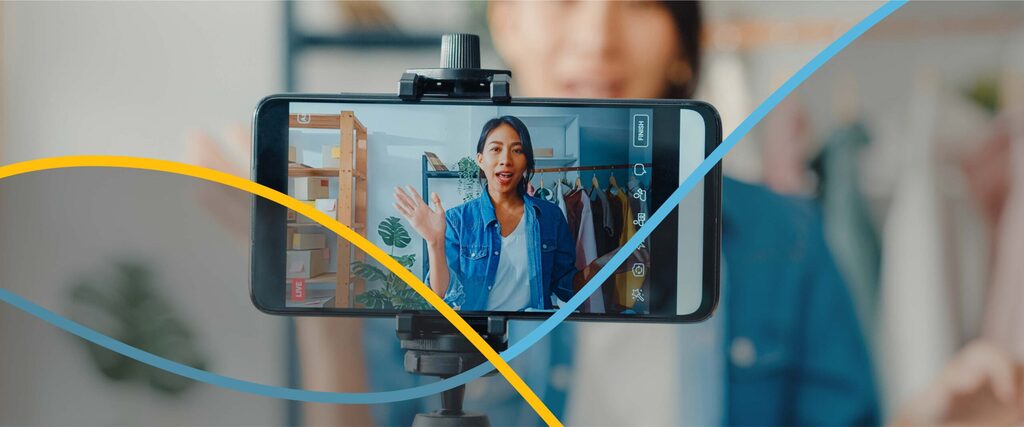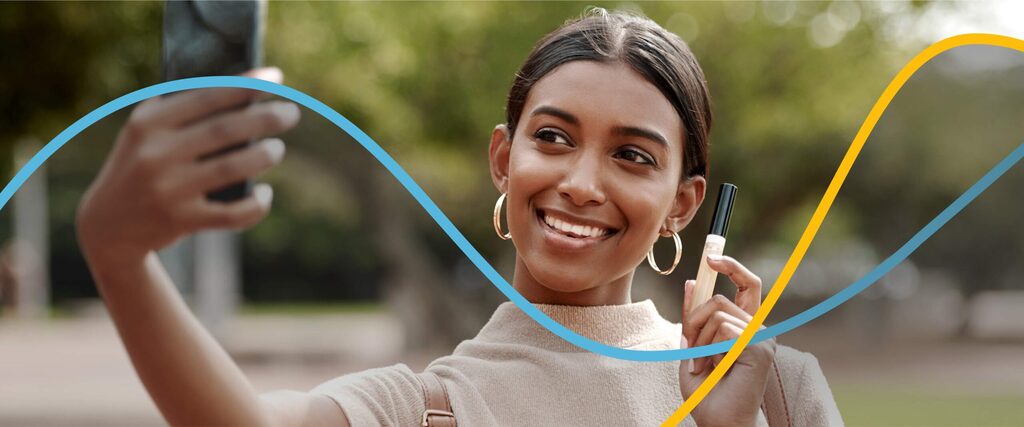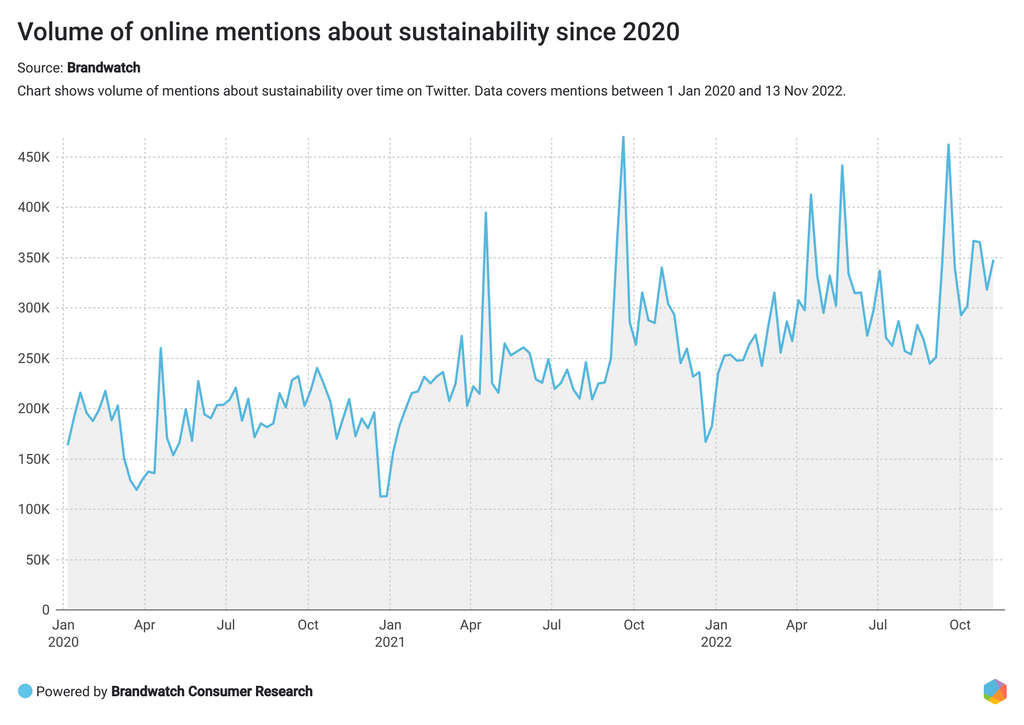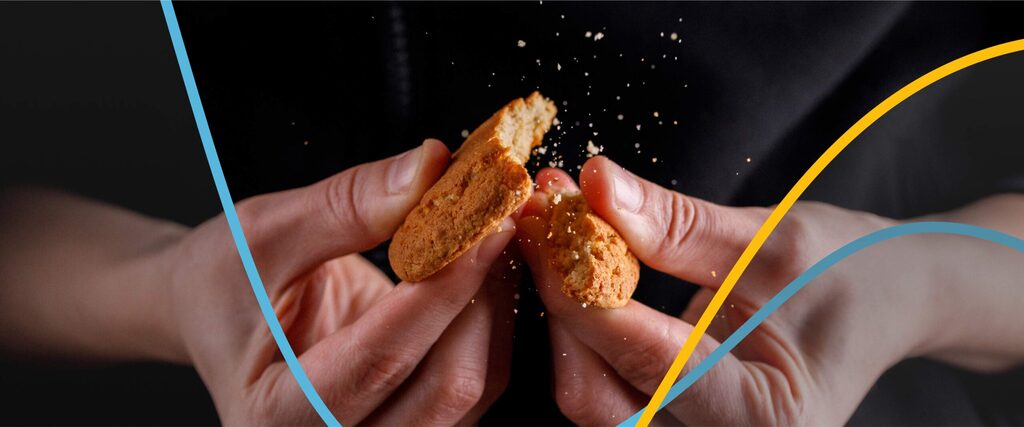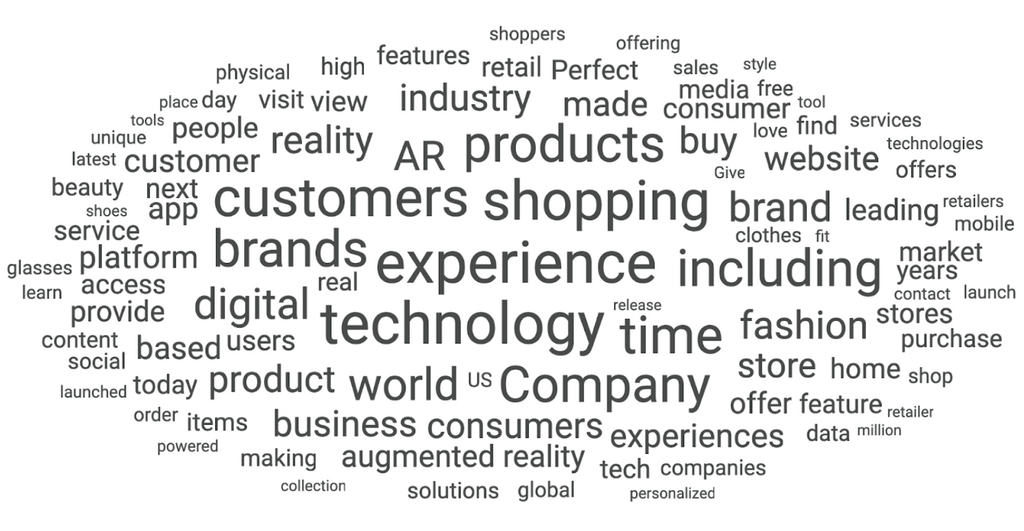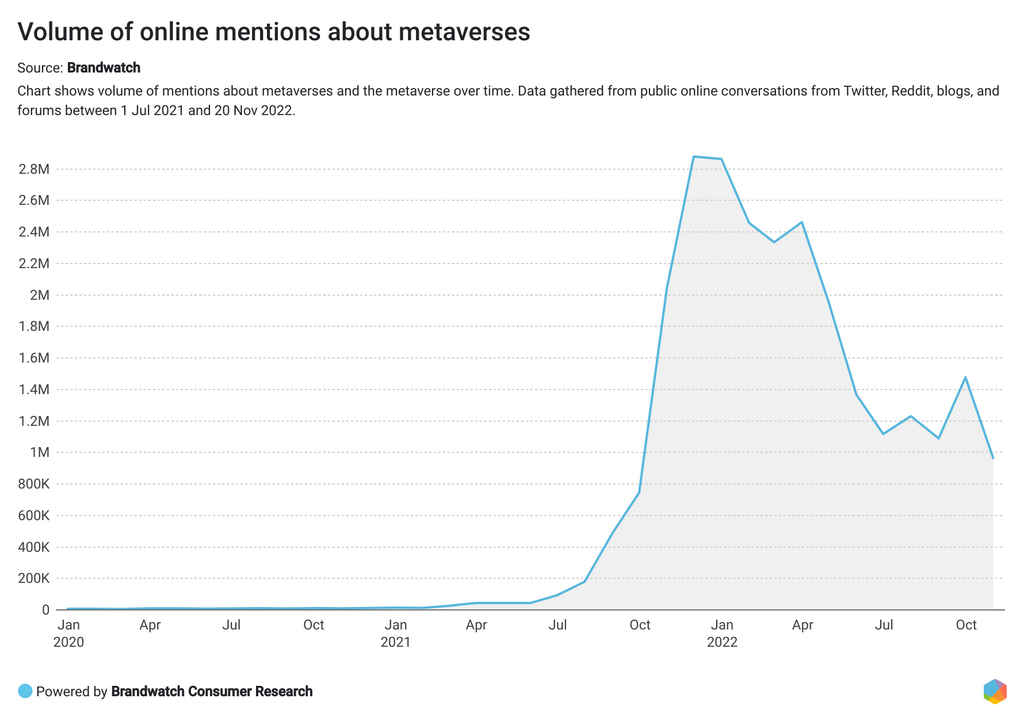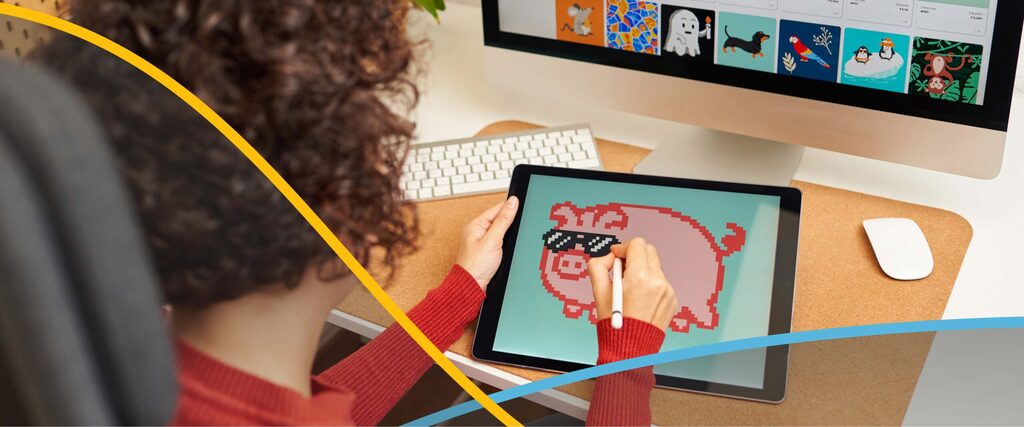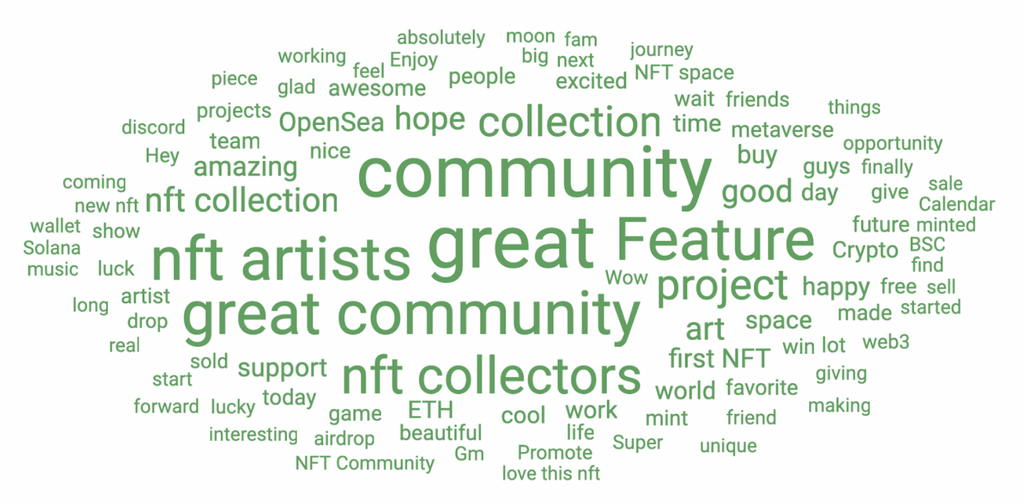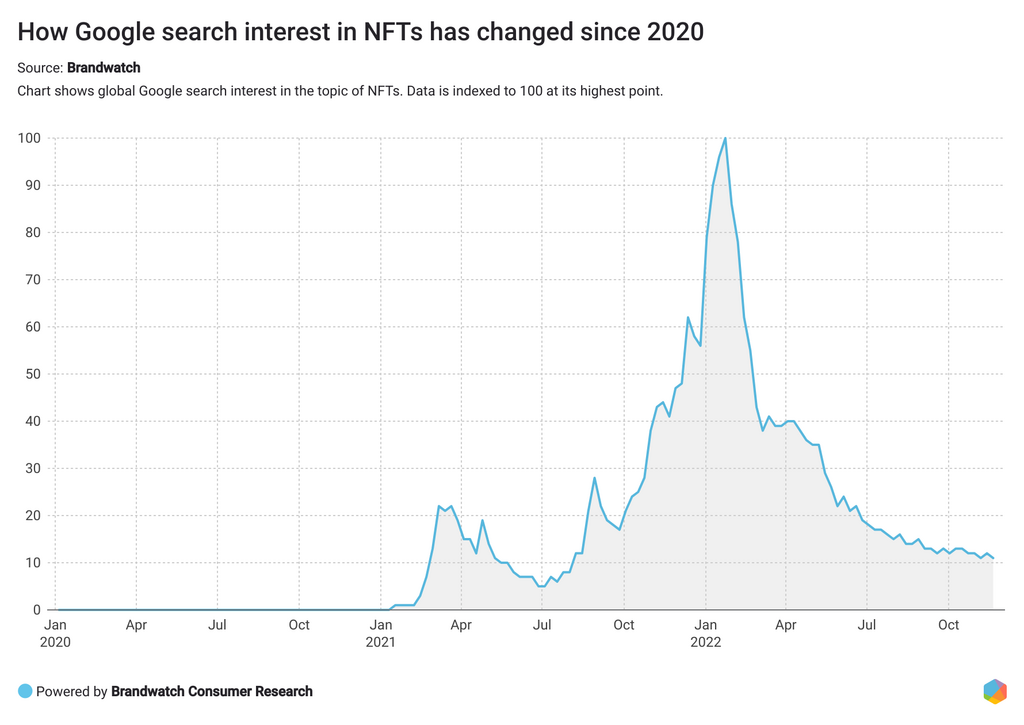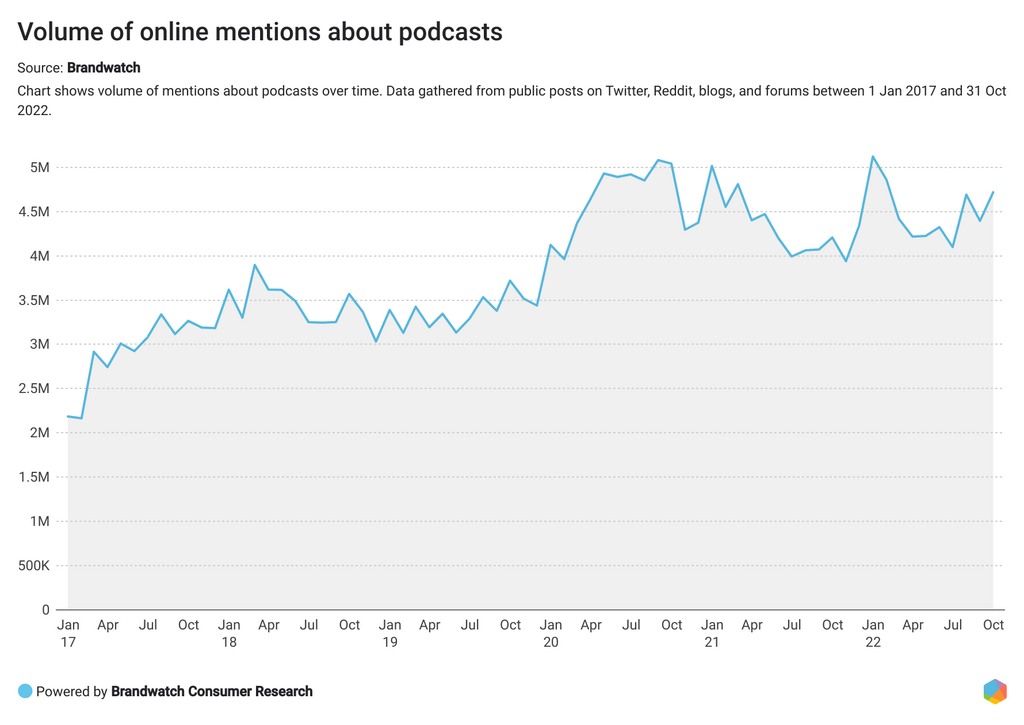REPORT
Digital Marketing Trends 2023
Discover the biggest digital trends which will impact your business in 2023.
Get startedForget about business as usual. In 2023, marketers will need to decode the new rules of engagement brought on by groundbreaking new technologies and fresh platforms.
As marketers, we’re constantly trying to discover new ways to drive connections and build a following for our brands through the power of emerging digital technologies. Whether that’s through influencer partnerships, the development of a metaverse strategy, or tapping into the NFT craze, the brand-building opportunities are all around us. But how do we do this in a meaningful way and avoid the pitfalls of the shiny and untested?
We’ve trawled through our data and pored over the numbers. This report will give you a clear picture of where the digital marketing world is going, how leading brands are paving the way, and what actions your brand can take to leverage them too.
While some of these trends have existed in one form or another for a while, none of them have held more power than they do today – and will in 2023. For years, we’ve talked about influencer marketing, the rise of communities, and augmented reality. But much like the internet today is vastly different from the clunky, modem-based ’90s version, these trends are now peaking — and we’re seeing new trends emerge within those trends.
In other words, these are the most need-to-know trends as we look ahead.
Let’s get to it.
Trend #1: Scrappy content is thriving
As marketers, we need to do more with less: get scrappy and creative.
As lockdowns gripped the world, gathering even a small crew to shoot professional footage became impossible for brands. The trend that rose from the ashes of high-production-value video content was its contrarian twin – unpolished, ‘raw’ content. The internet has been in its grip ever since, and brands are continuing to push the limits.
This is particularly apparent on social media as you’ll see in the early movers section below. But some brands have taken things a step further, using very simple, presumably low-cost production methods in places you’d never expect. For example, the top-mentioned ad for the Super Bowl in 2022 belonged to Coinbase. The ad was simply a QR code bouncing around on the screen, yet it generated more than 79,000 mentions online during the game.
Unpolished content isn’t going away – in fact, it feels like we’re still yet to reach its peak in popularity. And, with dwindling marketing budgets in the face of economic hardship, this could be a blessing for the cash-strapped content team.
It’s something that playful B2C brands can revel in, but the trend really raises questions for organizations who value their polished aesthetic or that worry about losing their serious reputation.
Early movers
Perhaps unsurprisingly, the platform we’ve seen unpolished content really thrive on has been TikTok. Here are three accounts from three very different sectors who are drumming up a lot of attention with unpolished but highly entertaining content.
Pleasing creates a buzz
Founded by Harry Styles, this nail polish brand was always going to be a social media hit. In more recent TikToks, the brand has been creating surreal narratives with the collectible glass bottles in which the nail polish is housed, and viewers are suitably pleased.
Mailchimp’s doing it for the B2B brands
While they may not be driving enormous numbers with every video, Mailchimp’s relatively new TikTok account shows that there’s a place for B2B on the platform too. Marketing hacks and humor are the way to go, it seems.
Duolingo’s mascot takes on TikTok
Duo, the iconic owl, has amassed quite the following on TikTok, and for a good reason. Their dancing, Halloween costumes, and general office antics make for a fun watch and a good reminder to do your language lesson for the day.
Trend #2: The coming of age of influencer marketing
The way influencer marketing works is evolving. Brands need to adapt to stay ahead.
Influencer marketing is nothing new. However, the way brands leverage influencers is changing. From utilizing smaller influencers to working on large-scale multi-influencer campaigns, influencer marketing is a brilliant way for brands to engage with their audiences.
In 2022, the global influencer market size was $16.4 billion – that’s over four times bigger than TikTok’s advertising revenue. Brands who aren’t jumping on the influencer marketing bandwagon risk getting left behind.
"Influencer marketing continues to grow at double-digit rates each year because it's effective. People are tired of interruptive ads and trust recommendations from those they follow, so expect to see more brands partner with influencers to promote their products."
So, how is this market changing in 2023?
Content creators vs. large influencers
In 2023, we’re seeing a widening difference between content creators and influencers – which are no longer mutually exclusive terms. In the past, all content creators could be deemed influencers – and vice versa. Now, the definitions have shifted.
As influencers are gaining popularity – sometimes into the millions of followers – a disparity has developed between those with high numbers of followers, and those without. Now, while all influencers are content creators, not all content creators are influencers.
The term ‘influencer’ has developed to describe individuals with large followings, who are typically more expensive to work with and have a pre-established platform. Content creators, on the other hand, work slightly differently. These smaller-scale influencers produce high-quality, influencer-style content – without the large fee.
Brands can work with content creators who can produce brilliant social content for your social platforms without requiring them to have an established social media presence.
As well as the more affordable cost, another benefit of working with content creators is that they’re relatable. They’re usually not tied to working with large brands and may not have well-established opinions and styles, so they tend not to come with preconceptions from your audience. Their ability to be neutral and easy to relate to means these content creators could be the perfect fresh face for your brand on social media. UNiDAYs do this brilliantly to appeal to a student audience – we’ve added more detail in the early movers section below.
Virtual influencers
Virtual influencers are an interesting concept – one which marketers will need to grasp to stay ahead of the curve. A virtual influencer is exactly what it says on the tin; an artificially generated, fictional social media character. Created by companies or individuals with an eye for influencing, these virtual influencers are growing in popularity. People are curious about virtual influencers, which is why they’re succeeding so well on social.
While the concept has been around for a while, the hype around this modern way of influencing is growing. In fact, in 2022, 35% of American consumers purchased a product or service promoted by virtual influencers, with 40% of them being Gen-Z or millennials.
A number of well-known brands have adopted virtual influencers in 2022, and they’ve done it well. Prada tackled the virtual influencer beast with the creation of Prada Candy. Candy is a computer-generated celeb, a virtual muse for the fashion house’s perfume of the same name.
While arguably a strange concept, virtual influencers have become increasingly common in a short amount of time. Interest in this new phenomenon is growing, and the market size is expected to grow by 26% from $4.6 billion by 2025. Perhaps interest in the metaverse is creating a new slew of interest in the virtual influencer market, with some virtual influencers creating their own spaces.
Early movers
UNiDAYS’ work with content creators
Student discount website UNiDAYS launched a TikTok strategy which has brought in millions of views. They work with hundreds of content creators to make entertaining videos for their platform, which speaks directly to the student audience.
@myunidays Money saving tips for college students!! @ethanckelly #studentlife #UNiDAYS #college #US
♬ original sound - myunidays
PacSun works with virtual influencers
PacSun worked with well-established virtual influencer Lil Miquela to promote their new Soho Store under their #pacpartner initiative. The brand has seen plenty of success with their #pacpartner hashtag, which has over 6,000 posts.
Trend #3: It’s totally in to be ethical
Ethical brands are statistically more profitable. It’s time to get involved.
According to Investopedia, companies that lay the framework for business ethics in all facets of operations are more likely to become and remain profitable than their counterparts who don’t value ethics. Plus, companies on Ethisphere’s list of World’s Most Ethical Companies consistently outperform correlative companies, by around 7%.
From sustainability to inclusivity, building your business on ethical foundations is key to improving a brand’s relationships with customers, employees, and business partners. And this doesn’t stop at profits. Employees tend to remain loyal to, and perform more effectively for, a company with a high standard of ethics.
Brands that implement these principles across their digital strategy will likely reap the rewards in 2023.
Sustainability in business
It’s nothing new that the sustainability conversation is bigger than ever. In fact, over the last three years, the conversation has grown substantially. In 2022, the conversation peaked at almost 1.5 million mentions per month in September and October.
The importance of sustainability is seeping into business practices globally. In a 2022 study of 850 companies, 80% stated they planned to increase their investments in sustainability. Meanwhile, Capgemini reported that 77% of consumer products and retail organizations found that sustainability leads to increases in customer loyalty.
With this in mind, brands need to be aware of the shifting conversation and the high importance of implementing sustainability-based business practices. With more and more consumers valuing sustainability and green initiatives from the brands they buy from, businesses face losing customers if they don’t prioritize sustainability.
Inclusive marketing
Consumers want to see themselves in the brands they buy from, and companies need to tweak their marketing efforts to appeal to diverse demographics.
In 2022, Nielsen found that 59% of Black viewers are more likely to buy from brands that feature someone from their identity group in advertisements. Add to that, Twitter has found that the LGBTQ+ community are loyal and influential advocates for brands that resonate with them, meaning brands should speak up and be authentic in their support for the community. Plus, 72% of Gen Z said they would consider brands’ political leanings before making a purchase.
In 2023, brands will need to be actively inclusive in their marketing efforts on digital platforms. By doing this, brands can maximize their reach to potential customers on social media.
Early movers
Fenty’s inclusivity makes billions
In 2022, Rihanna became the youngest self made billionaire woman in the US, and Barbados’s first billionaire. This is largely due to her business ventures like Fenty Beauty, which was created so that women can feel included and empowered – with a lineup of shades for people of all colors.
Roccamore rewards saving energy on Black Friday
Shoe retailer Roccamore launched an initiative to encourage consumers to save energy at home for Black Friday. If a customer saves 30% energy in a given week, they’ll be rewarded with a 30% discount code for their next purchase.
Patagonia’s emphasis on ethics
In 2022, Patagonia’s founder went as far as donating the entire company to a charitable trust which fights climate change – a move which obviously generated a huge buzz. The brand has always lived and breathed its ethics, and it still commits 1% of its total sales to environmental groups.
Trend #4: A cookieless future
Without cookies, it will become harder to track users across the web. It’s time to prepare.
Cookies are the blood of most marketing teams. From gathering data to tracking user journeys, cookies help marketers find out vital information about their consumer base.
However, changes in Google’s cookie strategy could impact ad-tracking in 2023, changing the way we use cookies for good.
Google plans to phase out third-party cookies on Chrome browsers in 2023, not long after Apple did away with access to device identifiers on iOS. As of October 2022, Chrome has a 65% market share of internet browsers, with Safari in second at 19%. With such a large percentage of internet users opting for Chrome as their default browser, marketers are going to be impacted heavily by this change.
Users are demanding greater privacy, which is a main driver for Google’s decision. So, is it the end of cookies? And how can marketers implement new ways to gather vital data in a cookieless future?
Interestingly, 41% of marketers believe their biggest challenge from Google’s cookie changes will be the inability to track the right data. So, if you’re a marketer who relies on robust data for online advertising, pop-up ads, or a pin-pointed audience-targeting strategy, you’ll need to consider new ways to find your data.
In 2023, we expect there to be a rebalance of digital ad spending to include more brand-building and less over-targeting. Digital advertisers will need to be proactive in their marketing efforts, to create a positive brand identity for consumers as a whole – to focus less on specific targeting. Leading with a strong brand identity is key, so consumers can recognize your image across your digital presence.
"The shift towards a cookieless future naturally makes a lot of us uneasy. But ride the storm. On the other side is a more transparent, creative, and ethical way of marketing."
Early movers
Automated Creative uses social listening to test ads
Tech company Automated Creative has created an innovative way to test new ads for clients. Instead of relying simply on consumer data from advertising platforms, they make data-driven decisions based on what consumers are saying online. Automated Creative’s analysts test which themes to use in ads based on data they find on Brandwatch Consumer Research, so they understand why certain ads work better than others.
Trend #5: Brands tackle social media fatigue
Brands are battling social media fatigue by encouraging healthy relationships with the digital world.
Throughout the pandemic in 2020, social media usage skyrocketed as individuals looked for ways to fill up their free time and connect with others. However, this peak in users has seen an interesting shift since lockdowns began to ease. According to a report by Global Web Index, since 2020, there’s been a 12% increase in individuals saying they use social media less than they used to.
Interestingly, Gen Z is the most concerned about time spent on social media, compared to other generations. They’re also more likely to use social media less than they may have previously. In 2023, we’ll likely see an even bigger increase in users opting to avoid social media, or who actively monitor their social media usage.
We used Brandwatch Consumer Research to dive deeper into the conversation online about people deciding to leave social media. Between January and October 2022, interestingly, 53% of emotion-categorized mentions about wanting to leave social media were categorized as sad. Anger was the second most prevalent emotion, at 27% of emotion-categorized mentions.
Many social media users state boredom as the largest factor for not deleting social platforms. It seems many individuals no longer find as much value from social media, or are experiencing growing fatigue from extended use of these platforms.
i be wanting to delete social media so bad sometimes but i know im gonna be MAD bored if i do
— gen ⍤ (@genmnz) May 24, 2022
Brands are beginning to incorporate this social media fatigue in their digital strategies, offering ways for their audiences to find a break on their platforms. Here are some brands doing this well.
Early movers
Boohoo partners with The Brain Coach for mental health
To battle poor body image, fashion retailer Boohoo partnered with clinical neuropsychologist Nawal ahead of Mental Health Awareness week. This came after the retailer found that 70% of its customers dislike their bodies, which is amplified through social media usage. This is part of a wider campaign to make Boohoo’s customers feel better and tackle the digital drama and unintended dark side of social media.
Lush launches The Global Anti-Social Media Policy
Cosmetics brand Lush quit four of the biggest social platforms – Facebook, Instagram, TikTok, and Snapchat. Instead, they’re encouraging their audience to spend time elsewhere, in order to gain more from their time on social. Instead, the company is growing its YouTube presence, using Twitter for customer care, working on valuable email newsletters, and being inspirational on Pinterest.
Trend #6: Communities are on the rise
People want to belong and connect, creating an opportunity for brands to deepen their relationships with their customers.
Smart brands have a strong presence where their customers are. For years it was enough to be present on the biggest social networks, implement your social media presence, and figure out the algorithms. But there’s a shift happening that we think will become more visible in 2023.
One reason consumers spend time online is to connect with people or brands they love. On the big social networks, it’s getting more and more difficult to cut through the noise. 2022 saw some hype with new apps like BeReal or Gas, indicating that people hunger for something new. With the rise of Web3, we’ll also see more decentralized networks over the next few years.
Younger audiences want to have more control over the pages they operate. They want more privacy, and the introduction of authentic apps like BeReal and Gas shows that people long for places where they can be their true selves. Communities and niche platforms can deliver this experience and offer brands a chance to get closer to their customers. According to research by Hubspot and LoyaltyLion, 47% of consumers say they would become loyal to a brand if they were part of a community with like-minded people.
A look at the online conversations around communities and niche platforms shows that, between 1 January and 15 November 2022, the number of individuals talking about the topic increased by 6% compared to last year.
The desire for closer connections online has contributed to the rise of community platforms like Reddit and Discord. Discord, for example, began as a platform for gamers to communicate in-game. It has since grown into a place where communities thrive. In September 2021, Discord reported 150 million global monthly active users, an increase of 50 percent compared to June 2020. Reddit’s also growing among young people. A 2021 survey found that 36 percent of internet users aged 18 to 29 years use Reddit. However, the reach of the social platform strongly declines with age.
Brands might benefit from tapping into this need for community and getting involved on platforms that value connectivity. For example, you might create a Discord server for your consumers to chat with each other or provide value on subreddits where potential customers might spend their time.
Early movers
Lego and the value of crowdsourcing
We'd be remiss not to mention one of the earliest movers in this field, which continues to see the value in bringing passionate people together. Lego Ideas is a co-creative community, over 1.8 million members have submitted over 36,000 ideas since its launch in 2008. Some of those ideas Lego brought to market, like the famous Friends Central Perk café Lego set.
Sister got me the Friends Lego set of Central Perk. It was so much fun to build, and I love how it turned out 😍 pic.twitter.com/X7B24Lwlw8
— Mares (@MareReee) May 5, 2022
Sephora embraces beauty fans
Beauty brand Sephora built their own community for make-up enthusiasts. They make the community easily accessible via different channels. It’s part of their shopping experience, and they give the beauty community a valuable and safe space to talk about their passion.
Paramount and RECUR build digital spaces for expression of fandom
In 2022, Paramount and long-standing partner RECUR launched a number of digital NFT collections on paramount.xyz featuring fan favorites from Star Trek to Top Gun. In a press release, the CEO of RECUR, Zach Bruch, said these digital collectible experiences offer fans a community to be part of for years to come. The collections did face some backlash though, when some die-hard fans argued that NFTs and their favorite movies do not go together.
"Communities are important spaces for brands and have the power to create loyal advocates. But this does not happen overnight. Brands must invest in their communities or risk falling behind competitors who have accurately identified their customers’ and prospects’ need for trusted peer content and social validation."
Trend #7: Augmented reality as the preferred way to shop
Consumers expect marketers to seamlessly connect digital experiences with physical stores.
The pandemic gave augmented reality technologies a considerable push. With big players in the tech industry – like Apple, Google, or Snapchat getting involved – we’re set to see plenty of innovations in 2023.
The AR and VR market gained 28 billion dollars in 2021, and is expected to grow to more than 450 billion U.S. dollars by 2030. With AR technology, brands can remove digital customer experience barriers, connect physical stores with online shops, and reach younger consumers.
Especially in retail, virtual try-on features have become more and more popular. Consumers can virtually fit cosmetics, clothes, or furniture before they buy. According to Brandwatch Consumer Research, the online consumer conversations around ‘virtual try-ons’ continues at a high level. In fact, mentions increased by 8% between January and November 2022 compared to the same period last year.
‘Experience’ is the most mentioned keyword in online consumer conversations around ‘virtual try-on.’ New technologies can enhance the digital shopping experience, and consumers are excited about it. And it’s not all about shopping: AR technology could revolutionize the healthcare industry in the next ten years.
Let's look at some brands that are excelling at using AR technology for their marketing initiatives.
Early movers
The Home Depot boosts conversions with AR
This home improvement retailer offers consumers the chance to virtually fit furniture or decorations in their homes, via its mobile app. AR helps consumers see if specific items fit the size and style of their rooms before they purchase the product. And it works. The Home Depot saw two to three times higher conversions from consumers using AR technology compared to those who don’t use it.
Pull & Bear introduces a collection with AR game
Inditex, the fashion giant behind Pull & Bear, launched their first AR-powered game in May 2021. People could play the game via Facebook or Instagram and go on a virtual journey. With gamification, the brand can reach a younger audience in a playful and fun way.
Nike reaching younger audiences with Shopping Lenses
332 million Snapchat users are engaging with augmented reality every day. Snapchat is an excellent network for brands to experiment with AR technology, allowing them to reach younger audiences. Snapchat users can virtually try on Nike shoes via the app and see how they would look on them. This can help to remove purchase barriers and reduce returns.
Trend #8: Metaverses set a new level of gamification
With metaverses, companies could reach a younger audience and implement gamification in their marketing strategies.
The idea of metaverses received a lot of hype in 2022, receiving a slew of both positive responses and worthy criticisms. While metaverses aren’t a mainstream thing in the slightest just yet, more and more consumers are warming to the idea that metaverses are on the rise.
Between 1 January and 15 November 2022, there were over 19.2 million mentions of metaverses in online conversations. According to BuzzSumo, over 265k articles were published, generating over 13 million engagements.
2022 was a year of firsts. There was the first metaverse fashion show, not to mention the first financial service provider that entered the space. But what will 2023 have in hand for brands? Will metaverses finally become mainstream?
Probably not, but metaverses will be a big topic in the digital marketing space in 2023. We will see more campaigns and collaborations, brands creating their own spaces, and companies looking for ways to measure their success.
According to research by McKinsey & Co., metaverses could be worth 5 trillion dollars by 2030. Plus, it’s predicted that in 2026, 25% of people will spend at least one hour a day in a metaverse. For brands, metaverses offer a chance to create new experiences for consumers.
Especially for reaching younger people, metaverses are a valuable channel for companies. Gen Z, and the succeeding generation alpha, spend more time on metaverse platforms like Fortnite or Roblox than other generations. Gamification is one of the most important marketing tools to connect with them.
Early movers
Gucci and their virtual garden
In May 2021, luxury brand Gucci opened a garden in Roblox. People could visit the garden for a limited time and buy digital clothing for their avatars. Users visiting the garden end up with an avatar with a unique pattern depending on their interactions they made in the rooms. The clothing they earned was influenced by the experience they had in the garden. It was a success. One virtual Gucci bag from the event later got resold for a higher price than the physical version.
Crocs celebrate with virtual concert
Another example in the Roblox world. Crocs invited the K-pop band Aespa to play a concert in their Crocs World space to celebrate the 20th anniversary of the company. Their announcement tweet got over 22k likes and is one of the posts with the highest engagement in online conversations around metaverses in 2022. The event led to over 10k mentions on social, from almost 6,500 unique authors.
Outfit for the #crocsxaespa roblox concert is ready HIIIIIII pic.twitter.com/Z8sdETDSwr
— aesoka (@AESOKATANO) October 23, 2022
Epic and Lego build world for kids
Epic Games, the company behind the popular online game Fortnite, and toy brand Lego teamed up to build a family-friendly metaverse. While the collaboration is still in the making, the project tackles an important issue: how to protect children in metaverses without excluding them from the experience.
Trend #9: Brands continue to experiment with emerging technologies
Brands are evolving in how they use new tech, recognizing it as an opportunity to make the headlines and engage with customers in new ways.
From artificial intelligence and machine learning to NFTs and blockchain technology, the past few years have seen the emergence of a number of exciting technologies that offer brands new opportunities to create interesting marketing activations. In 2023, we expect to see more brands using emerging technologies and push the boundaries of what they're capable of, but as with all experiments there's an element of risk to be aware of.
Take NFTs for example. The last couple of years have seen a boom in interest and promising projections for growth, while brands have shown real creativity in this area (see the early movers section). As you can see from this topic cloud, which shows positive mentions around NFTs online in 2022, there's a lot of excitement about the community, artists, and collections.
All that said, if we look at the search data around NFTs, it seems like consumer interest in the topic has already reached its peak and searches are in decline.
And while there's plenty of hype on social, this community-focused conversation is driven by those actively engaging in trading and collecting NFTs – a group who are naturally going to sing the praises of the trend.
Experiments help push the industry forward, but marketers should always exercise caution before jumping into expensive new activations, especially when budgets are tight.
Early movers
Reddit and collectible avatars
Speaking of communities, Reddit (the biggest network of communities) launched collectible NFT avatars. Created by independent artists and Reddit creators, the unique avatars were quickly sold, and some avatars landed later on the NFT marketplace OpenSea in the top 10 list of favorite NFTs.
Heineken wants us to raise our glasses
VR glasses, that is. In April 2022, Heineken launched their new virtual Heineken Silver: “Our virtual beer is made only from the freshest pixels: no malt, no hops, no yeast, no water and also, no beer.“ While taking the mickey out of the digital world and urging users to “try to try it” in the metaverse, Heineken’s point is that some things — like beer — are better enjoyed in the real world.
Hugo Boss sets engagement records
Hugo Boss used NFTs as part of their fashion week campaign in October 2021. Alongside collaborations with influencers, the fashion company also started a TikTok challenge and offered unique NFT jackets as prizes. The campaign was hugely successful. Over 1.3 million videos were created by people on TikTok, and the brand achieved four billion impressions in four days, the largest social media coverage in fashion week history.
Trend #10: Multi-format content
Marketers will need to diversify their content offering to shape up to consumer needs.
Consumers want tailor-made experiences. Remarkable content. Fits-like-a-glove personalization. And they want it yesterday. On top of that, they also want blog posts, webinars, infographics, podcasts, videos, quizzes, white papers, case studies, eBooks, articles, checklists, newsletters... the list goes on.
Sound excessive? We’re afraid that means you're already falling behind.
Year after year (and yes, we've been guilty of this at Brandwatch, too), brands try to predict what content formats will take the cake from short-lived vertical videos to conversational podcasts. But the truth is that no single format will rule for long.
Since the pandemic killed off the five-day office work week, the demand for content of all kinds has only increased, leaving brands with no choice but to offer consumers a broader catalog of experiences to meet a wider range of lifestyles.
It’s tempting to think that it's the value of your content that matters, but the format you use to demonstrate that value will determine to what degree your audience takes action in 2023.
Text is one way to go about it (be it short or long-form, blog posts or eBooks). Audio will give you emphasis and enthusiasm beyond bold, italic, and underline. Video offers visuals to enhance your message. Finally, you’ve got the interactive and immersive virtual reality experience of metaverses we’ve talked about above.
With content marketing’s projected increase of $487.24 billion from 2022 to 2026, it is safe to say the demand is growing and that several different content formats have gained popularity in recent years.
Take a look at podcasts, for example:
Riding on the consumer popularity of podcasts, we’re also seeing tech giants getting more serious about podcasts. Recently, YouTube made a fairly significant move and launched a dedicated podcast homepage.
So, yes, audio content is booming.
But some brands even take it beyond what we can read, see, and hear, and they capitalize on the senses of taste, touch, and smell. While the internet cannot yet convey the smell of warm soup, fresh laundry, or frosted pine Wunder-Baum, 6/10 expect to be able to digitally experience natural smells by 2030.
The point is: Consumers are more likely to spend their time and hard-earned money on products that perfectly align with their tastes, desires, and demands. They want stories and experiences developed for them, not only containing the information they want but also in the form they prefer to consume. As a result, brands will have to expand their content strategies in 2023 and beyond, identifying the content – and the style of content – their consumers want.
Early movers
The Washington Post rules on TikTok
As they're a daily newspaper, you won't be surprised to learn that The Washington Post leverages multiple content formats to perfection. But what may surprise you is that the newspaper has included bite-sized comedic skits on TikTok in their content catalog to cover breaking news.
Chipotle tries scent marketing
Chipotle's greatly diversified content portfolio ranges from employee vlogs to TikToks, from fan-made content to bitcoin gamification. And while we’ve established that the internet still does a lousy job of conveying smell, certain companies are already utilizing the chemical language of scent with offline campaigns. In August 2022, Chipotle turned an online conversation into a real product when they launched a lemonade-scented candle inspired by fans who ‘accidentally’ fill their water cups with lemonade. This cheeky, limited-edition soy candle campaign generated a lot of buzz and sold out almost immediately.
Looks like our water cup, smells like our lemonade. “Water” Cup Candle drops at 9AM PT today on https://t.co/URP9z1BAzu. pic.twitter.com/G1SsAK309S
— Chipotle (@ChipotleTweets) August 18, 2022
A few final words
The digital marketing landscape is constantly changing. From NFTs to social fatigue, marketers need to be nimble to meet evolving customer needs. As consumers get used to new tech, or as they move to new ways of spending their time online, it’s important for brands to meet their audiences where they are.
It’s impossible to try every single new trend, but it’s definitely possible to dabble in new ways to reach your audience. Try implementing one or two of these trends into your digital strategy to reap the benefits with your consumers.
